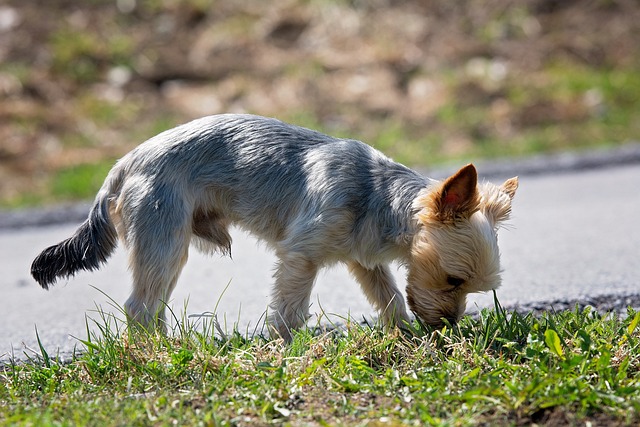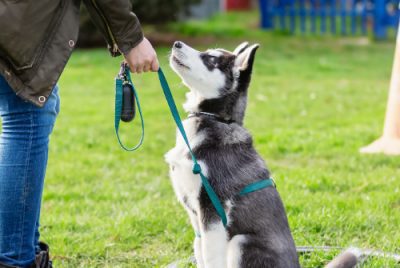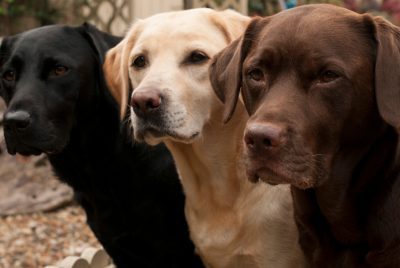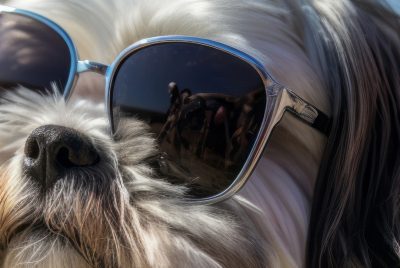Stop Dog Peeing in the House: Simple Steps Guide
Post Disclaimer
We may earn a commission for purchases made using our links. Please see our Disclaimer to learn more.
Ultimate Guide: How to Stop My Dog From Peeing in the House
What are the common reasons why dogs pee in the house?
Dogs may pee indoors due to territorial marking, anxiety, medical issues, lack of house training, or excitement. Understanding the underlying cause is key to addressing the behavior effectively. Regular walks, consistent feeding schedules, and positive reinforcement can help prevent accidents in the house.
Welcoming a pet can bring joy and love. Dealing with dog accidents indoors can frustrate owners. If you are tired of cleaning up pee, don’t worry! This post shares steps to prevent accidents. Tips help establish good habits for a clean home.

Understanding Why Dogs Pee Indoors
Dogs may pee inside because of medical or behavioral problems. To solve this, know why accidents happen. Reasons include poor training, medical issues like infections, and behavioral problems such as anxiety. Find the cause to stop future accidents effectively.
The Impact of Inadequate House Training
Proper training is key to avoiding accidents at home. Dogs need clear guidance to learn where to pee. Inadequate training can lead to indoor peeing issues, frustrating both owners and pets. Consistent methods like crate training help establish good habits early on. Using positive reinforcement also helps dogs understand where to go potty. Consistency is crucial for successful house training and preventing future accidents indoors.
The Role of Age and Health Issues
Age and health can cause indoor accidents. Older dogs might have trouble controlling their bladder, leading to accidents. Medical issues like kidney disease or urinary infections can also result in inappropriate urination. Keep an eye on your dog’s health and see a vet if you notice any problems. Taking care of these concerns can prevent accidents and keep your pet healthy.
Behavioral Concerns and Anxiety
Behavior problems and worry can make dogs pee inside. Dogs with separation stress might urinate indoors when alone. A difference in the home, like a new pet or moving, can cause anxiety accidents. It’s crucial to tackle these behavior worries by giving proper training and play to make your dog feel safer and surer. If you know what upsets your dog and help them behave better, you can lower their anxiety and prevent indoor accidents.
Identifying the Triggers for Inappropriate Urination
To avoid indoor accidents, find out why dogs urinate inside. Reasons like marking territory, stress, and fear can lead to inappropriate urination. Some dogs mark their territory, while others do it out of anxiety or excitement. Knowing what triggers your dog’s behavior can help prevent accidents in the future.
Marking Territory or Stress-Related Issues
One reason dogs urinate inappropriately is marking, which they do to claim territory. Male dogs do this more, but female dogs can, too. Stress from changes like a new baby can also lead dogs to pee inside. To prevent this behavior, train them well and make their environment positive. Help them cope with stress through exercise or calming methods. Managing these triggers can stop accidents caused by marking behavior and stress.
Excitement or Fear-Related Incidents
Excitement, pee and fear of accidents can cause indoor messes. Dogs may pee when too excited, like meeting new people. They might also urinate from fear due to loud sounds or new places. Help them ease into new experiences, calm fears, and reward good behavior to avoid accidents indoors.
Practical Tips to Prevent Indoor Peeing
Now that you know why dogs have accidents inside, let’s see how to stop them. Use these tips to teach good habits and keep your home clean and pee-free.
Importance of Regular Health Check-ups
Regular vet check-ups help prevent indoor accidents. Visit the vet to ensure your dog’s health. Health problems such as infections, kidney disease, or bladder stones can cause accidents. Vets can diagnose and treat medical issues to prevent accidents. Addressing health problems keeps your dog healthy and reduces indoor accidents.
Implementing Effective Potty-Training
Proper potty training is the foundation for preventing indoor accidents in dogs. By following these effective potty-training techniques, you can establish good bathroom habits in your furry friend:
- Consistency is key: Establish a consistent potty breaks, feeding, and walking routine. Dogs thrive on routine and will learn to anticipate bathroom breaks.
- Use positive reinforcement: Reward your dog with treats, praises, and petting when they go outside to potty. Positive reinforcement encourages good behavior and helps your dog understand the desired outcome.
- Utilize crate training: Crate training can be an effective way to housetrain your dog. Dogs have an innate instinct to keep their sleeping area clean, so using a crate can help them learn bladder control.
- Supervise closely: Pay close attention to your dog’s behavior, especially after meals or naps. Dogs often exhibit signs of needing to go potty, such as sniffing, circling, or whining. Take them outside immediately when you notice these cues.
- Clean up accidents promptly and thoroughly: Use an enzymatic cleaner to remove urine odors and discourage your dog from returning to the same spot.
Monitoring Your Dog’s Habits Closely
Monitoring your dog’s bathroom habits closely can help in preventing indoor accidents. Establish a consistent routine for feeding, walking, and bathroom breaks. This routine will help your dog understand when and where they should eliminate. Pay close attention to your dog’s behavior, especially after meals or naps, as these are common times for bathroom needs. Look for signs such as circling, sniffing, or restlessness, which indicate that your dog may need to go potty. By taking your dog outside promptly and providing positive reinforcement when they eliminate in the appropriate area, you can reinforce good potty habits and reduce the likelihood of indoor accidents.
Ensuring a Clean Environment
Keeping a tidy space is important to prevent dog accidents inside. If there’s a mess, clean it quickly and well to eliminate pee smells. Dogs smell odors strongly, so old urine scents can draw them back. Use a special cleaner that breaks down urine smells. Don’t use cleaners with ammonia; it smells like pee and might encourage more accidents. A clean, fresh-smelling area helps stop indoor peeing and supports good potty training habits.
Dealing with Specific Situations
In addition to the general tips mentioned above, addressing specific situations that may contribute to indoor accidents is important. By understanding how to deal with these scenarios, you can effectively prevent your dog from peeing in the house.
What to Do When Your Dog Pees on Your Bed
Finding your dog has urinated on your bed can be frustrating. To address this issue, follow these steps:
- Clean up the mess immediately to prevent your dog from marking the same spot again.
- Take your dog outside regularly to provide plenty of opportunities for bathroom breaks.
- Consider crate training or using pee pads to help with housebreaking.
- Consult with a veterinarian to rule out any underlying medical issues that may be causing the inappropriate urination.
- Provide positive reinforcement and rewards when your dog goes to the bathroom outside.
Managing Puppy Accidents
Puppies are still learning and may have occasional accidents. To manage puppy accidents, try the following:
- Establish a consistent routine for potty breaks, feeding, and playtime.
- Use positive reinforcement and rewards when your puppy successfully eliminates outside.
- Clean up accidents promptly and thoroughly to remove any lingering scent.
- Consider crate training or using a small, confined area for potty training purposes.
- Consult with a veterinarian if your puppy continues to have accidents indoors. It may have a medical issue or require additional training guidance.
How to Prevent Territory Marking
Male dogs, in particular, may use marking behavior to establish their territory. To prevent territory marking indoors, apply the following strategies:
- Establish a consistent routine for potty breaks and praise your dog when they eliminate outside.
- Clean up any accidents promptly and thoroughly to remove the scent and discourage marking in the same spot.
- Consider crate training or limit your dog’s access to areas where they tend to mark, such as by using baby gates.
- Provide plenty of exercise and mental stimulation opportunities to prevent boredom-related marking behavior.
- Consult with a veterinarian or animal behaviorist if the marking behavior persists despite your best efforts.
When to Seek Professional Help
Most pee problems can be solved with earlier tips. Ask a vet or dog expert for advice if issues continue or health troubles arise. They’ll check your dog’s health, behavior, and training to determine why accidents happen indoors. Getting help ensures the right diagnosis and treatment plan, especially if health issues are involved.
Identifying When to Consult a Vet
Consulting a veterinarian is crucial when dealing with indoor accidents, especially if health problems are suspected. If your dog continues to have indoor accidents despite proper house training, it may indicate an underlying health issue. Bladder stones, urinary tract infections, or other medical problems can cause dogs to urinate inappropriately. A veterinarian can conduct a thorough examination, perform necessary tests, and develop a treatment plan to address any health concerns. By identifying and treating the medical causes, you can help your dog achieve good bladder control and prevent indoor accidents in the future.
Considering Behavioural Therapy
In cases where inappropriate urination is due to behavioral issues, such as separation anxiety, professional behavioral therapy may be beneficial. Behavioral therapy can involve techniques to manage anxiety, desensitization exercises, and behavior modification. A trained dog behaviorist or veterinarian specializing in behavior can evaluate your dog’s specific issues and provide appropriate guidance. By addressing the root cause of the behavioral problem, you can help your dog overcome their anxiety and reduce the incidence of indoor accidents.
Additional Tips for a Pee-Free Home
In addition to the previous tips, here are some additional strategies to create a pee-free environment in your home:
The Benefit of Spaying or Neutering Your Dog
Spaying or neutering your dog can have multiple benefits, including helping to prevent indoor accidents. Here’s why:
- Spaying female dogs eliminates the heat cycle, minimizing the desire to mark territory.
- Neutering male dogs reduces the urge to urine mark, making house training easier.
- Spaying or neutering can also decrease the risk of certain health issues, like urinary tract infections, which can contribute to inappropriate urination.
- Additionally, these procedures can help control the pet population, promote responsible pet ownership, and prevent behavioral problems related to reproductive hormones.
Increasing Potty Breaks and Exercise
Increasing the frequency of potty breaks and providing ample exercise for your dog can significantly reduce indoor accidents. Here’s how:
- Take your dog for potty breaks more frequently, especially after meals, naps, and playtime.
- Regular exercise keeps your dog active and helps maintain a healthy bladder, decreasing the likelihood of accidents.
- Longer walks and play sessions provide additional opportunities for your dog to eliminate outside, reducing the need to go indoors.
- Mental stimulation, such as puzzle toys or training sessions, can also help tire out your dog and prevent boredom-related accidents.
- By increasing potty breaks and exercise, you are setting your dog up for success in maintaining good potty habits and keeping your home pee-free.
Importance of Patience and Positive Reinforcement
Patience and positive reinforcement are key elements in preventing indoor accidents and teaching your dog good potty habits. Here’s why:
- Potty training takes time, and accidents are bound to happen. Patience is essential during the training process.
- Positive reinforcement, such as treats, praises, and petting, helps your dog associate going potty outside with positive experiences.
- Avoid punishment or scolding when accidents occur, as this can create anxiety and make potty training more challenging.
- Consistency in training methods and positive reinforcement techniques will reinforce the desired behavior and help your dog understand what is expected of them.
- Being patient, consistent, and providing positive reinforcement is a good idea for potty training your dog and preventing indoor accidents.
Have You Tried These Techniques to Stop Your Dog Peeing in the House?
Implementing the techniques mentioned in this blog post can effectively stop your dog from peeing in the house. Remember to:
- Consistently implement potty training techniques, such as crate training, positive reinforcement, and a regular bathroom routine.
- Monitor your dog’s behavior closely for signs of needing to go potty, and take them outside promptly.
- Maintain a clean environment by promptly cleaning up accidents with an enzymatic cleaner to remove urine odors.
- Address specific situations, such as inappropriate urination on the bed or marking behavior, with targeted strategies.
- Seek professional help, whether it be from a veterinarian for medical issues or a dog behaviorist for behavioral concerns.
- Use positive reinforcement, patience, and consistency in your training methods.
- Incorporating these techniques into your routine can set your dog up for success and allow it to enjoy a pee-free home.
Conclusion
In summary, stopping your dog from peeing indoors involves various steps. Recognizing triggers and good potty training are key. Regular vet check-ups, watching habits, and a tidy space are crucial. Dealing with accidents or marking needs specific solutions. Knowing when to get expert advice matters, too. Tips like spaying/neutering and more exercise help. Using rewards also aids in teaching good bathroom manners for a clean home.




